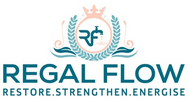
Reverse Osmosis vs Ultrafiltration: Which One’s Best for Your Water?
If your tap water tastes more like a lab project than a refreshment, it’s time to look at reverse osmosis and ultrafiltration. You can find a comprehensive breakdown of the mechanics in our In-Depth Insights into Reverse Osmosis Systems and Applications, but don't go anywhere, weare about to reveal the pros and cons of each to help you pick a winner.
Overview of Reverse Osmosis (RO)
Ever poured a glass of water and wondered why it smells a bit... odd? Or why your kettle builds up limescale like it's growing a shell? Reverse osmosis (RO) is one of the UK’s go-to solutions for water that’s far from fresh. It’s like having a personal water bouncer in your cupboard, letting only the good stuff through. Especially useful in places like Kent, where the water can be as hard as your nan’s scones.
Process Description
RO pushes water through a super-fine membrane using high pressure. This membrane doesn’t mess about—it blocks even the tiniest contaminants. What’s left is clean, crisp water, with all the unpleasant extras sent packing. Think of it as a posh Brita filter with muscles.
Contaminants Removed
Reverse osmosis systems are serious about purity. They remove:
-
Dissolved salts and minerals
-
Heavy metals like lead and arsenic
-
Fluoride, chlorine, and nitrates
-
Microplastics and sulphates
If you’re in a hard water area or worried about what’s lurking in your pipes, RO gets the job done.
Overview of Ultrafiltration (UF)
Ultrafiltration (UF) is like RO’s more laid-back sibling. It still protects your water but does so with a gentler touch. It's perfect for those who want clean water without stripping out all the goodness. If RO is a high-tech espresso machine, UF is your reliable kettle—gets the job done, and quietly.
Process Description
UF uses a membrane too, but the pores are a bit larger. It filters water at lower pressure, trapping bacteria, parasites, and dirt without needing an industrial-sized pump. Imagine a microscopic sieve catching all the unwelcome guests, while the good stuff flows through.
Contaminants Removed
Ultrafiltration is brilliant at tackling:
-
Bacteria and viruses
-
Sediment, sand, and dirt
-
Rust and larger organic particles
-
Algae and cysts
The best bit? It keeps in minerals like calcium and magnesium—great for your cuppa and your bones.
Key Differences Between RO and UF
Let’s put these two side by side. Spoiler alert: they both win in different ways.
Filtration Pore Size
-
RO: Incredibly fine at around 0.0001 microns—enough to catch dissolved salts, metals, and even some chemicals.
-
UF: Larger pores (0.01–0.1 microns), perfect for bacteria and particles, but not fine enough for dissolved substances.
Energy Consumption
-
RO: Needs a pressure pump and uses more energy. Think of it as a gym workout for your water.
-
UF: More relaxed—works with gravity or gentle pressure, so it's easier on your electricity bill.
Water Wastage
-
RO: Can waste 25–50% of water during the process. Not ideal if you're watching your meter.
-
UF: Minimal waste—usually just 5–10%, sometimes none at all.
Applications of RO and UF
Where do these filtration systems work best? It depends on what you’re battling in your tap.
Suitable Scenarios for RO
-
Hard water areas like Essex, Kent or Yorkshire
-
Homes with high TDS (total dissolved solids)
-
Chemical or metal pollution in local supply
-
Whole-house systems needing powerful purification
-
Commercial sites like labs, car washes, or factories
Suitable Scenarios for UF
-
Soft water regions like Scotland or Wales
-
Households focused on bacteria or sediment removal
-
Kitchen setups or under-sink filters
-
Eco-conscious homes avoiding waste
-
Industries like brewing, where minerals matter
Advantages and Disadvantages
No system is perfect. But the right one depends on your needs, your location—and possibly how much space you’ve got under the sink.
Pros and Cons of RO
Pros:
-
Removes nearly all contaminants (up to 99%)
-
Excellent in hard or polluted water areas
-
Provides tasteless, odourless, very clean water
Cons:
-
Expensive upfront
-
Wastes water during filtration
-
Removes beneficial minerals
-
Requires regular maintenance and pressure
Pros and Cons of UF
Pros:
-
Keeps healthy minerals in the water
-
Affordable, smaller, and simple to install
-
Energy-efficient and eco-friendly
-
Lower maintenance hassle
Cons:
-
Doesn’t remove dissolved salts or chemicals
-
Not suitable for very hard water
-
Less thorough than RO for deep filtration
Conclusion: Choosing the Right Filtration Method
Still stuck between RO and UF? Let’s make it easy:
-
Pick RO if you’re dealing with hard water, high chemical content, or just want the cleanest water possible—even if it means losing some minerals.
-
Choose UF if your water's mostly safe, and you just want to kick out the bacteria without wasting water or power.
Start with a local water test—many councils offer them. Check for things like TDS, chlorine, or microbial contamination. And don’t forget to dive into In-Depth Insights into Reverse Osmosis Systems and Applications if you’re serious about making the best choice for your household. Clean water isn't a luxury—it’s a daily essential. So whether you're after the smoothest brew, safer baby bottles, or just fewer limescale headaches, the right filter is just a smart decision away.
More Reverse Osmosis info we think you'll love
How Many Stages Does Reverse Osmosis Have?
Reverse Osmosis and Osmosis Difference
Reverse Osmosis and Ultrafiltration
Reverse Osmosis and UV Water Filter
Reverse Osmosis vs Deionized Water
Reverse Osmosis vs Gravity Filter
Reverse Osmosis vs Hydrogen Water
Can Reverse Osmosis Remove Microplastics?
Reverse Osmosis Water Treatment Plant


Leave a comment